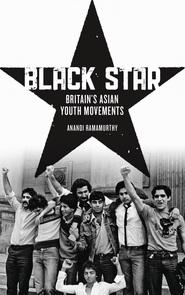 ‘Come what may; we’re here to stay’. This rallying cry of the Asian Youth Movements (AYMs) of late ’70s Britain evokes a defiant identification with a new and radical Britishness. Facing the brunt of fascist abuse and police indifference, these second-generation South Asians, unlike their parents, knew that they wished to stay in Britain and grew up in an environment both challenging and hopeful.
‘Come what may; we’re here to stay’. This rallying cry of the Asian Youth Movements (AYMs) of late ’70s Britain evokes a defiant identification with a new and radical Britishness. Facing the brunt of fascist abuse and police indifference, these second-generation South Asians, unlike their parents, knew that they wished to stay in Britain and grew up in an environment both challenging and hopeful.
Another popular chant went: ‘Labour, Tory, both the same: both play the racist game’, which expressed dissatisfaction and aversion to mainstream politics. Immigration laws had become even tighter with the 1971 Immigration Act, and the trial of the Bradford 12 (members of the United Black Youth League who were prosecuted for making petrol bombs for the purpose of self-defence against skinhead gangs) a decade on spread awareness of the problem of fascist and police violence in Britain.
As for the movements themselves, an interesting aspect of the Bradford AYM – and one of many instances of their shrewd organisational skills – is that party membership was forbidden. This rule alone prevented derailment by outside debates and ‘factional disputes’.
The British Left failed to defend Asian youth, and the blinkered ‘Rock Against Racism’ movement highlighted that, according to one AYM activist: ‘we can’t dance away racism’. Ramamurthy provides details of the various failings and tokenist inclinations of the British left, and the AYM’s shared conviction that they had to fight their corner with their own means, avoiding tokenism and co-option by Trotskyists including the Socialist Workers’ Party.
Despite the youth movements defining themselves as ‘Asian’, a black political identity was cultivated, distinguishing them from political predecessors, and enabling ‘a collective identity and solidarity with Africans and African Caribbeans in the struggle against racism.... It was an identity that was inclusive rather than exclusive’. Such a moniker represented their determination ‘to build solidarity between Africans, Caribbeans and Asians.’
For activists of any involvement, it is a moral boost to read such a positive series of collective struggles, especially those conducted with such ingenuity and common sense as in the case of the Bradford AYM.
Black Star is also a useful reminder of a murky topic and potential peril: state funding. Thus Ramamurthy explains how (specifically in the Bradford and Salford AYMs) state patronage corrupted and diluted movements of radical worth, eroding autonomy, strength and unity. One manifestation of this creeping problem was that, when particular individuals were being paid, others perceived no need to get involved. Hegemony was maintained, and state influence effectively removed the teeth of the AYMs.
By its very nature a state-funded campaign group finds it difficult to effectively target state institutions, namely institutional violence, police racism and vigorously unfair immigration laws. ‘[C]ampaigning was effectively uprooted from the heart of their work’ in favour of more politically-palatable activities like youth centres and sports clubs and less potent, milder campaigns like education, equal opportunities, housing reform, all of which were ‘worthy but not revolutionary’ according to the Institute of Race Relations’ Ambalavaner Sivanandan.
Ramamurthy is unequivocal: ‘The pursuit of state funds was to lead to the disintegration of the [Bradford AYM] movement.’
Finally, while Ramamurthy’s academic rigour is laudable - and the interviews add something of an emotional kick - it should be noted that a more literary slant could have transformed this book from a worthy and sobering textbook into a moving account of a hard struggle, fought well.
For example, in one moving incident, a young set of activists heading to a demo on a bus, learn traditional folk songs from an elderly Pakistani man. There must be a wealth of similar day-to-day accounts worthy of space.


